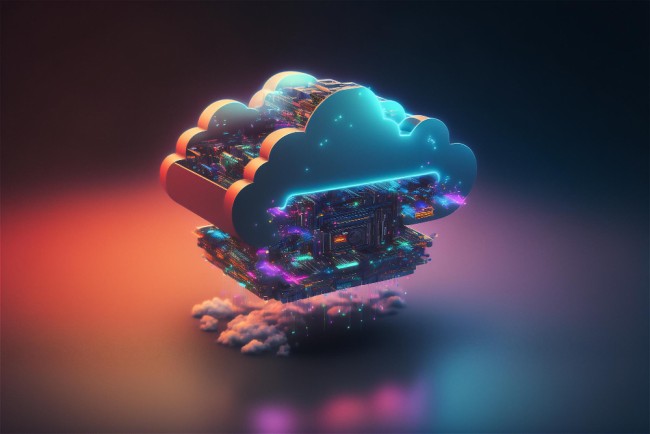The rapid increase in data generation and consumption has led to the development of efficient data management and processing technologies – namely, Cloud Computing and Edge Computing.
While both have their distinct attributes and advantages, understanding which is more beneficial requires an in-depth look at their functions, use cases, and impact on future tech trends.
Understanding Cloud Computing
Cloud Computing refers to the delivery of computing services, including storage, processing power, databases, networking, and more, over the internet (“the cloud”). By leveraging the cloud, businesses can achieve economies of scale, reduce costs, and increase productivity.
Its key advantages include cost-efficiency, scalability, speed, and accessibility. For example, services like Google Drive or Amazon Web Services epitomize the utility of Cloud Computing, allowing users to store and access vast amounts of data across different devices.
Understanding Edge Computing
Edge Computing, conversely, is a distributed computing paradigm that brings computation and data storage closer to the location where it’s needed. This minimizes latency and enhances the speed of data processing.
The strength of Edge Computing lies in its capacity to process data in real-time, reduce dependence on the cloud, and save bandwidth. An application like autonomous vehicles, which requires instantaneous data processing to make real-time decisions, is a prime example of Edge Computing.
Comparing Edge and Cloud Computing
When compared, both Edge and Cloud Computing have distinct features and benefits. Cloud Computing offers unparalleled cost-effectiveness, scalability, and flexibility but may suffer from latency issues and dependence on a robust internet connection.
Edge Computing shines in situations requiring real-time data processing and reduced latency. However, it might face challenges in terms of higher costs for data management and potential storage limitations.
The Interplay of Edge and Cloud in IoT
In the realm of the Internet of Things (IoT), both Edge and Cloud Computing hold significant roles. As IoT devices generate a substantial amount of data, Edge Computing can manage this data locally and in real-time, improving device performance.
Meanwhile, Cloud Computing complements this by providing extensive data storage and advanced analytics capabilities, making sense of the vast amounts of data collected by IoT devices.
Security Considerations
When discussing Edge and Cloud Computing, it’s important to touch upon the security aspect. Cloud providers typically have robust security measures in place to protect data. But as data travels over the internet, it could be vulnerable to cyber threats.
On the other hand, while Edge Computing can provide enhanced security by processing and storing data closer to the source, it presents new security challenges. Every edge device becomes a potential entry point for cyber threats.
Cost Implications
The cost structures of Cloud and Edge Computing are inherently different. Cloud services usually follow a pay-as-you-go model, where businesses pay for what they use. This model reduces upfront costs and provides excellent flexibility.
Conversely, implementing Edge Computing might require significant upfront investment in edge hardware and infrastructure. However, the resulting reductions in bandwidth usage and latency can lead to significant cost savings over time.
The confluence of Edge and Cloud Computing presents an exciting frontier for technological innovation. They complement each other, offering enhanced capabilities in handling data that is growing exponentially, both in volume and in complexity.
For instance, technologies like augmented reality (AR) and virtual reality (VR) require significant computational power and low latency. Here, Edge Computing can provide immediate data processing, while the Cloud offers extensive storage and analytical capabilities to enhance the overall user experience.
The Role of 5G
The advent of 5G technology further supports the combined use of Edge and Cloud Computing. With its high-speed data transfer and reduced latency, 5G will unlock new potential for both Edge and Cloud Computing.
These technologies together, powered by 5G, can drive innovations in various sectors, including healthcare, manufacturing, transportation, and more.
The Environmental Impact
When discussing these two technologies, it’s also important to consider their environmental impacts. Cloud data centers, although increasingly efficient, are large-scale energy consumers.
Edge Computing can offset some of this consumption by processing data locally, reducing the need for continuous data transmission to the cloud. By balancing the use of both technologies, we can aim for a more sustainable technological future.
Future Trends
Both Edge and Cloud Computing are expected to grow, given their integral roles in digital transformation. Edge Computing, especially, is likely to experience growth acceleration with advancements in IoT, AI, and 5G technologies. However, Cloud Computing’s role in data storage and analysis remains irreplaceable.
As we delve deeper into the era of digital transformation, the most promising approach appears to be integrating Edge and Cloud Computing, rather than choosing one over the other. By leveraging the strengths of both, businesses can optimize their operations and achieve superior results.
This integrated approach is particularly relevant in scenarios where IoT devices generate massive amounts of data. Edge Computing can handle the real-time data processing and decision-making at the device level.
Meanwhile, the data can be sent to the Cloud for long-term storage, analysis, and insight generation, where latency isn’t a pressing concern.
Conclusion:
In conclusion, the choice between Edge and Cloud Computing isn’t a zero-sum game; it’s context-dependent. While Edge Computing excels in environments that demand real-time processing, Cloud Computing provides robust, scalable solutions for diverse data needs.
Understanding this will allow businesses and users to leverage the right technology for their specific needs, often utilizing a blend of both. The key is not to view these technologies as competitors but as complementary components in the evolving digital landscape.
Also Read:
